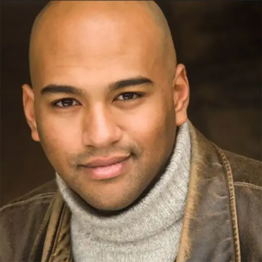E.B. Smith, Director of Artistic Inclusion at the Cleveland Play House, is in a unique position wearing multiple hats, that of actor, director, and administrator. Few artists consider taking on all three positions at the same time, but in these challenging times requiring the dismantling of old systems, perceptions, and values, transformation and evolution are obligatory — even in the theater world.
The performing arts are, beyond just mere entertainment, a means by which society and culture can reflect upon itself. That can’t happen when the internal structures that produce that art either blindly or purposefully marginalize and de-value specific people and groups to control the narrative. That control has seeped into every aspect of the arts, institutionalized it in what can only be termed as racism.
What we as audience members see and experience through the arts impacts and influences our worldview, our very sense of identity. Most of us are completely unaware of the fact that our “view” has been slanted and even adulterated. Through decades of change has helped bring some understanding to this situation, much still needs to be done. Shifting the structure and narrative is what E.B. is focused on through his work on stage and behind the scenes.
As E.B. explained, “When I started to do more of the hands-on administrative work, it became really clear to me that it wasn’t just blindness. It was actually trauma. Racism infects all of us. It’s not just representation on stage or representation on the frontlines of the industry. It’s a result of attitudes that are both ideological, systemic, and institutional at the root. We must find ways to bring a focus back to the health of the people within the organization.”
At the heart of E.B.’s drive is connection. “If we’re honest with ourselves, that needs to be the focus of every administrator in every industry. It’s going in and caring for people, not just saying, ‘Here’s your benefits package’ but asking, ‘What do you need to find a healthy outlook on the community we’re part of? How do I materially support someone in terms of their mental health? How do we make sure that in coming to work, a person knows they’re valued?’” Understanding how to acknowledge the history of people’s relationship to these organizations is a crucial part of that connective journey.
E.B. points out that current administrative practices in the arts have been designed with consideration for one specific group of people, according to a white supremacist, patriarchal paradigm — it’s exclusionary and exploitive. With the extraordinary events, our country has dealt with in just the last couple of years, the depth, breadth, and long-standing trauma of racism is finally being recognized on a level never experienced before.
We can now see how racism has seeped into every facet of American life, our communication avenues, language, behaviors — and how that has been manifested in the arts. Hence, the need for getting to the root of this through how the arts approach art-making.
“We’ve allowed the theater to become commodified in really unhelpful ways,” E.B. said. “It has to do with the fact that our art has become devalued culturally and reduced to a capitalistic product. And that putting butts in seats is our primary focus, which means you give the people what they want, not what they need. When we venture into the territory of trying to sell our art as a product as opposed to making it a cultural technology for healing our communities, we’re on a dangerous path.”
And that’s part of the challenge with the arts — survival. It’s an age-old struggle: artistry & artistic integrity versus budgets & box office. Throw systemic racism into the mix along with social upheaval and the arts are in a prime position to help “evolutionize” the industry.
“Here at the Play House, we’re building a huge training mechanism called the Equitable Artistic Practices Team. What we’re doing is facilitating monthly discussion groups, trying to keep the conversation alive as regularly as possible so that it becomes acculturated, something that is just built into what we do.”
E.B. explained that one of the bright spots of the Play House is that there is a lot of engagement with education in the city. One of the things he’d love to see is for that education work to be more closely aligned with artistic work. He’d also like to see connections deepened, to become more substantive with more artist development in the city and worldwide.
“My goal is to be able to be in a position where I can cultivate an organizational culture that can make art healthily, that it can be a healing practice. I think if you pursue those opportunities that are in alignment, you can’t go wrong.” ●


